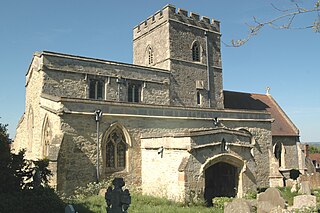
Earl of Lindsey is a title in the Peerage of England. It was created in 1626 for the 14th Baron Willoughby de Eresby. He was First Lord of the Admiralty from 1635 to 1636 and also established his claim in right of his mother to the hereditary office of Lord Great Chamberlain of England. Lord Lindsey fought on the Royalist side in the Civil War and was mortally wounded at the Battle of Edgehill on 23 October 1642. He was succeeded by his son, the second earl. He also fought at Edgehill and surrendered to the Parliamentarians in order to attend his mortally wounded father. Lord Lindsey later fought at the First Battle of Newbury, Second Battle of Newbury, and at Naseby. His son from his second marriage, James, was created Earl of Abingdon in 1682. He was succeeded by his son from his first marriage to Martha Cockayne, the third Earl. He represented Boston in the House of Commons and served as Lord Lieutenant of Lincolnshire.

Robert Bertie, 1st Duke of Ancaster and Kesteven PC, styled17th Baron Willoughby de Eresby between 1666 and 1701, and known as 4th Earl of Lindsey between 1701 and 1706, and as 1st Marquess of Lindsey between 1706 and 1715, was a British statesman and nobleman.

Peregrine Bertie, 2nd Duke of Ancaster and Kesteven, styled The Honourable Peregrine Bertie between 1686 and 1704, Lord Willoughby de Eresby between 1704 and 1715 and Marquess of Lindsey between 1715 and 1723, was a British politician who sat in the House of Commons from 1708 until 1715 when he was called to the House of Lords.
Willoughby Bertie, 4th Earl of Abingdon, styled Lord Norreys from 1745 to 1760, was an English peer and music patron.
Henry Norris was an English courtier who was Groom of the Stool in the privy chamber of King Henry VIII. While a close servant of the King, he also supported the faction in court led by Queen Anne Boleyn, and when Anne fell out of favour, he was among those accused of treason and adultery with her. He was found guilty and executed, together with the Queen's brother, George Boleyn, Sir Francis Weston, William Brereton and Mark Smeaton. Most historical authorities argue that the accusations were untrue and part of a plot to get rid of Anne.

Montagu Bertie, 6th Earl of Abingdon was a British peer and politician. He was styled Lord Norreys from birth until acceding in 1854.
Brownlow Bertie, 5th Duke of Ancaster PC, styled Lord Brownlow Bertie until 1779, was a British peer and politician who sat in the House of Commons from 1761 to 1779 when he succeeded to a peerage.

Beckley is a village in Oxfordshire about 4.5 miles (7 km) northeast of the centre of Oxford. Beckley is part of the civil parish of Beckley and Stowood. The 2011 Census recorded the parish's population as 608. The village is 400 feet (120 m) above sea level on the northern brow of a hill overlooking Otmoor. The hill is the highest part of the parish, rising to 463 feet (141 m) south of the village near Stow Wood. On the eastern brow of the hill is Oxford transmitting station, a television relay mast that is a local landmark.
Willoughby Bertie, 3rd Earl of Abingdon, of Wytham Abbey, Berkshire and Rycote, Oxfordshire, was an English landowner and Tory politician who sat briefly in the House of Commons in 1715.
Henry Bertie, JP, of Chesterton, Oxfordshire was an English soldier and Tory politician who sat in the English and British House of Commons between 1678 and 1715.

James Bertie, 1st Earl of Abingdon, styled Hon. James Bertie until 1657 and known as the 5th Baron Norreys from 1657 until 1682, was an English nobleman.
Montagu Venables-Bertie, 2nd Earl of Abingdon PC, styled Hon. Montagu Bertie until 1682 and Lord Norreys from 1682 to 1699, was an English nobleman.
Montagu Bertie, 5th Earl of Abingdon, styled Lord Norreys until 1799, was an English peer.

Francis Norris, 1st Earl of Berkshire was an English nobleman and courtier.
Captain Peregrine Francis Bertie was a British naval officer and politician who sat in the House of Commons from 1774 to 1790.
John Doddington was an English landowner and politician who sat in the House of Commons in 1640.
Sir Peregrine Bertie was a Jacobean soldier and landowner from Lincolnshire. He represented that county in Parliament in 1614, attended to local land improvements, and took part in several wars on the continent. He and his elder brother Lord Willoughby were frequently at odds with Lord Norreys.
Norreys Bertie was an English Tory politician. From a junior branch of the Bertie family which had inherited estates at Weston-on-the-Green in Oxfordshire, he represented that county in Parliament from 1743 until standing down before the bitterly contested 1754 election. He was unfriendly to the Hanoverian succession and sat in opposition to the government.
Anthony Henley, of the Grange, near Alresford, Hampshire, was a British politician who sat in the House of Commons from 1727 to 1734.
Sir Edward Norreys was an English Tory politician.












